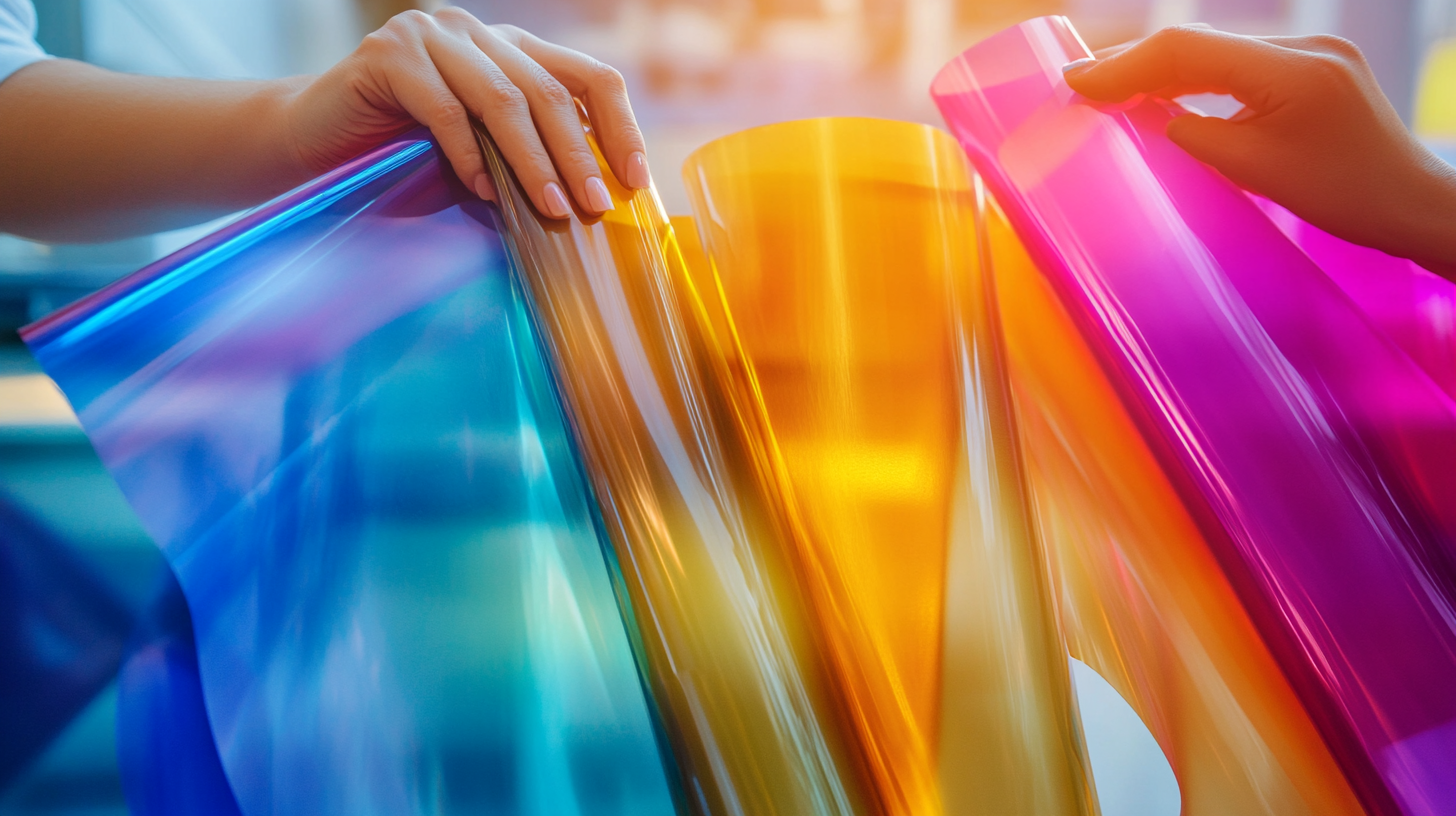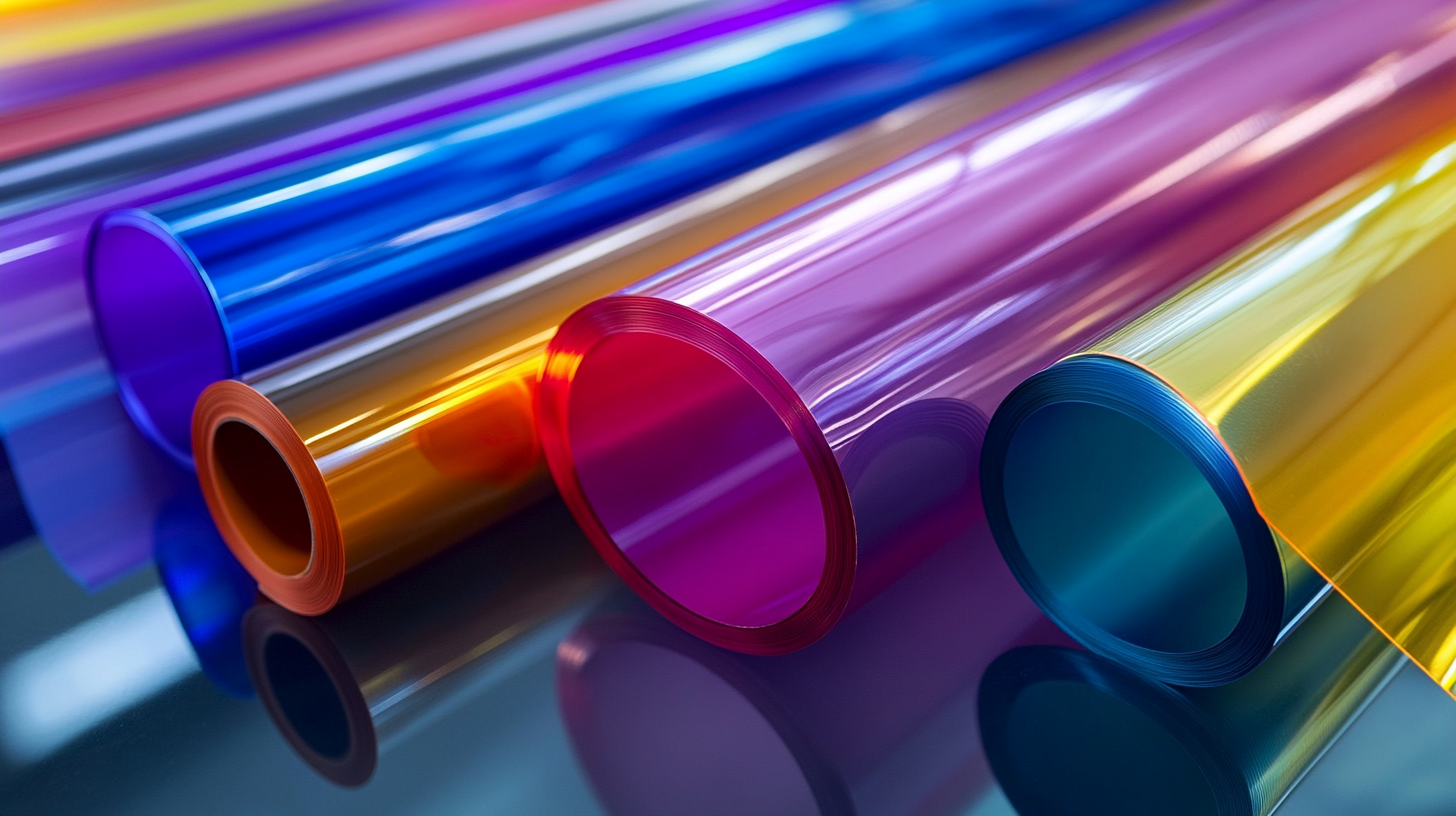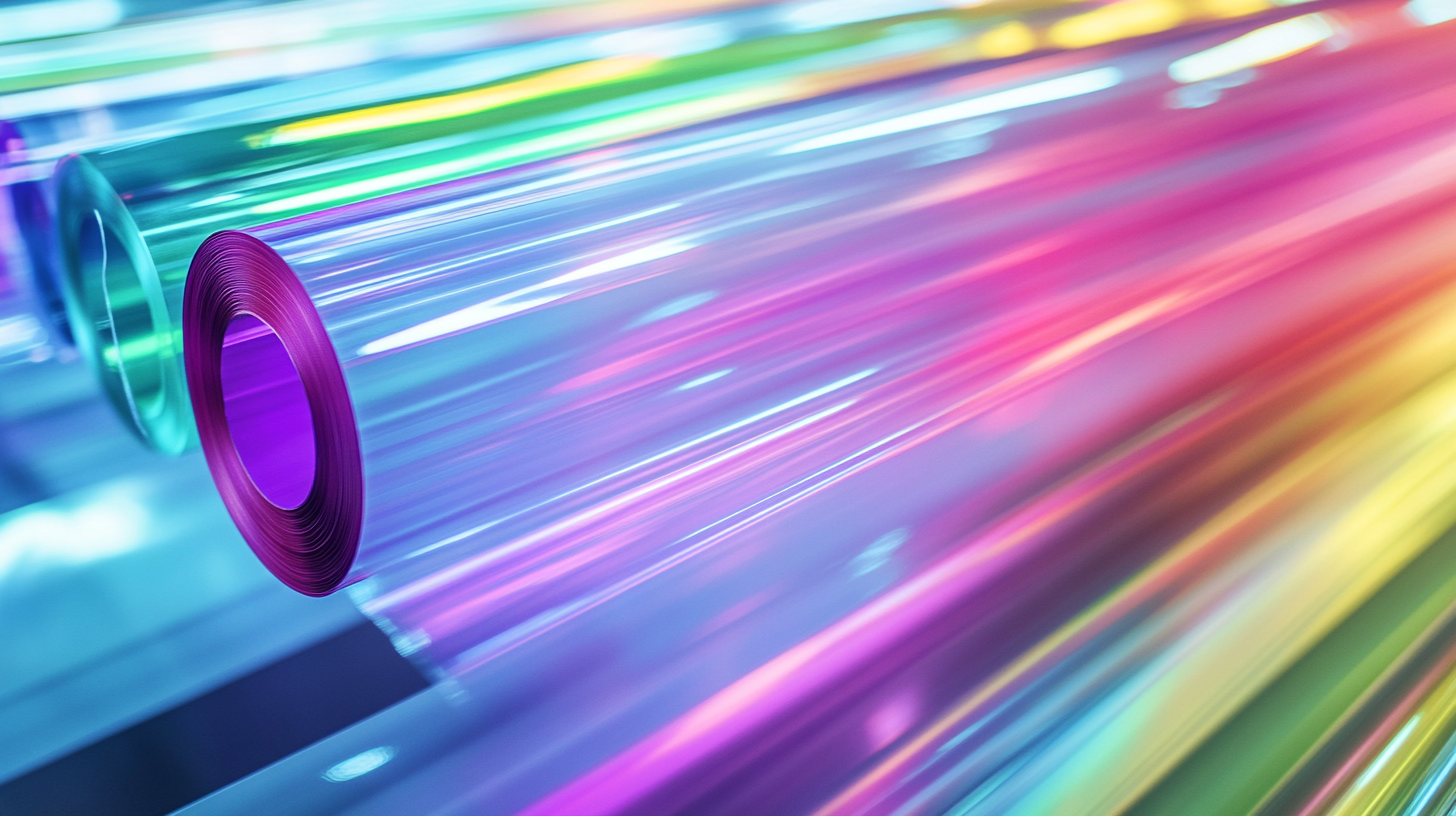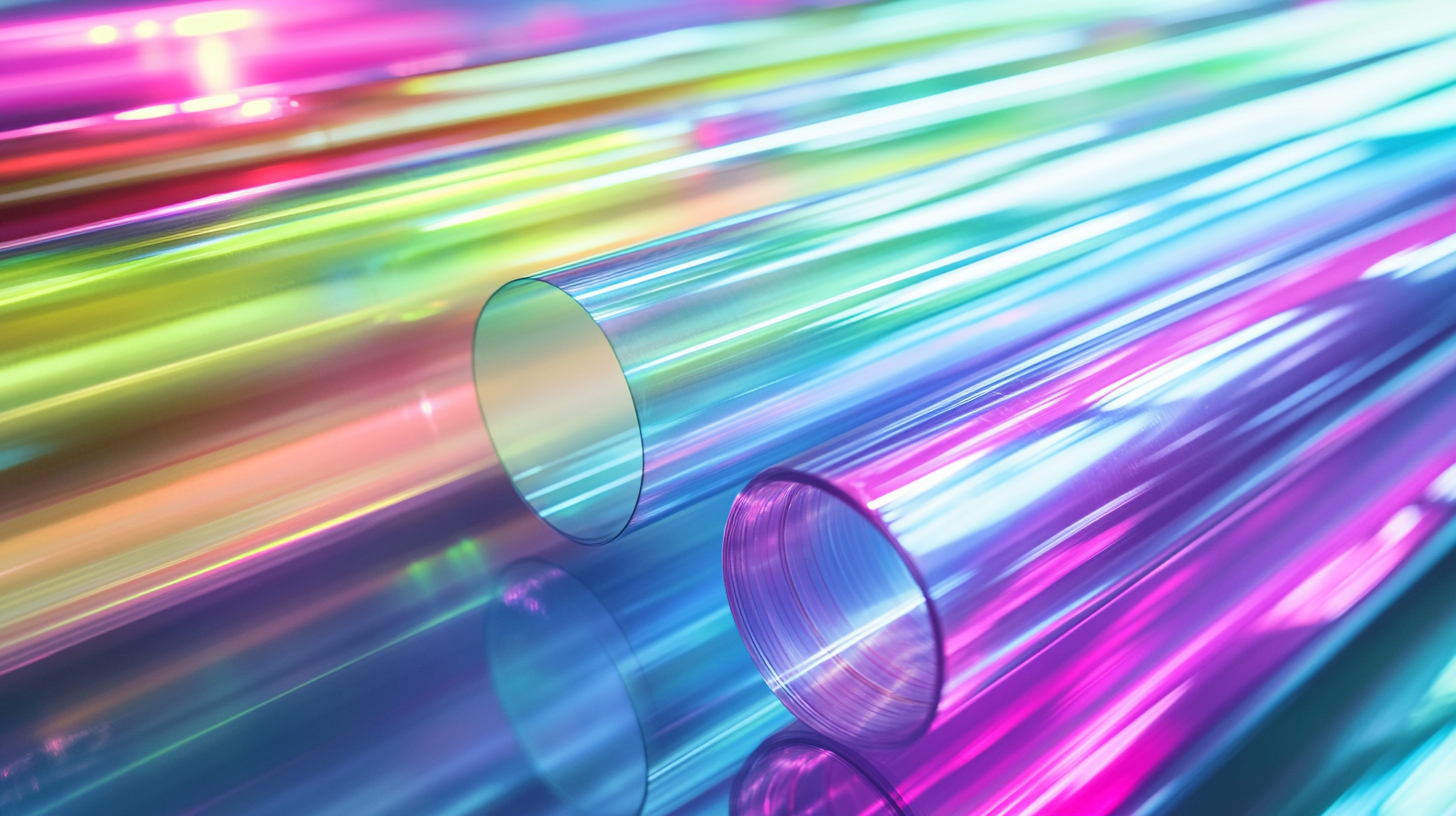The modern global environment, these days, keeps changing ever faster and demands new materials, pushing industries on to hunt for better materials for their packaging and manufacturing purposes. pvc film sheets are very versatile materials in most-a lot of applications such as construction, advertising, and consumer products. This blog will highlight future innovations in PVC film sheeting, demonstrating to the global buyer community the different and unique advantages that such materials can offer.
Though, keeping in mind performance and durability, the development of PVC film sheets is undertaking modern turns in favor of advancements in technology and an increasing awareness of environmental change among the consumers and industry as a whole. Be it improved recyclability or feature-rich customization options, all of these advances make PVC film sheets a wise and environmentally conscious choice. Let's explore further into future PVC film sheets and see the plethora of benefits they bring for a wider range of international buyers.

Market for PVC film sheets is changing. Transmutation is being catalyzed by the rise of newer technologies and environmental regulations. Earlier, with this plethora of growing bans on PVC in countries, innovative developments have also been seen, which would have been both compliant with all sustainability standards and also offer enhancement functionality for a slew of industries. As an example, they recently allowed their production lines to incorporate recyclable materials without compromising speed on the entire food packaging process. Researches on microplastics and their diverse implications on plastic films for agriculture further push the argument for changement. Microplastics in PVC films have not greatly changed nitrogenous gases, but they may boost conditions for denitrification, hinting at possible beneficial agronomic impacts. Moreover, new simulations on the degradation of plastic films have revealed a lot about the longevity and environmental profiles of these materials, which eventually led to the adoption of alternative films that minimize their ecological footprint. Manifold examples make a case for an increasing demand for recyclable non-PVC films, especially for polyolefin cling films in North American markets, which clearly indicates the trend adopted in the manufacturing activity of shifting towards sustainable materials. This is not a change to trend, but an evolution necessary by the consumer themselves as demanded by them for eco-friendly packaging. The industry has been under pressure to innovate even more because of California's recent legislation restricting certain plastic products.

The increasing strain for environmental sustainability is affecting different industries, and PVC film manufacture does not even escape it. New research estimates that the much-anticipated emerging global demand for green products by 2025 will attain a whopping $1 trillion. The huge impetus has made most manufacturers cut themselves into adopting green practices. At present, more and more PVC film sheets are produced using recycled materials and innovative processes that lower the environmental impact but preserve the high quality. Besides serving consumer demand for greener options, the shift also falls in line with some global initiatives to cut plastic waste.
The other significant innovation used in the PVC film industry is the bio-based additives, which increase the biodegradability of conventional PVC. In fact, according to the report published by MarketsandMarkets, bio-based plastics are expected to witness a CAGR growth of 16.67% between 2021 and 2026, on account of consumers' needs for sustainable options. Manufacturers could future-proof PVC film products by introducing these additives in the films because they will reach wider consumers as their carbon emissions or footprints are reduced.
All in all, the consumption of energy-efficient processes in the production activities is becoming a common practice among PVC film companies. Plastic Pollution Coalition data shows that adoption of energy-efficient processes could result in greenhouse gas emission reductions of up to 30%. It demonstrates a green commitment while presenting high operational efficiency to the global buyer's procurement strategies for responsible suppliers. With a scenario of changing face PVC film industry, these elements will touch point for this industry's future.

PVC film sheets have increasingly attracted many industries around the globe because of their unmatched properties and versatility in application. Durability is one of the first-most advantages of these sheets. The entire range is highly abrasion-proof and thus very suitable for the products that undergo frequent usage or work under harsh conditions. In the construction industry, PVC film sheet products-as cladding, roofing, and insulation materials-have to mature because that is important for the structure to last.
With these sheets, another incredible advantage is versatility as they can be produced in different thicknesses, textures, and colors; hence, they can be customized by any organization to fit specific requirements. In packaging, for example, it allows the manufacturers to offer attractive, weatherproof packaging which keeps the packages good and pleasant to the eyes of the consumers. Therefore, a lower weight helps to reduce shipping costs without losing strength or efficiency.
Further, PVC film sheets prove ease of maintenance as really valuable for many industries. Unlike most other materials that need to be tempted with special cleaning or protection, PVC sheets might be scrubbed with some mild detergent: This makes them worth choosing for environments under medical care, food processing, and also retail. This feat gives improved hygiene but also minimizes overall expenses of maintenance, thus offering an economical solution to businesses for optimizing operations.

When choosing materials for a variety of applications, PVC film sheets, and different alternatives such as polyethylene or polypropylene, prove to be decisive. PVC film sheets and durable chemical resistance have an excellent reputation. This will be the ideal material for use in packaging and protective applications. PVC is much more stable than polyethylene, which may not perform same under high temperatures or in harsh environmental conditions. Thus, the products remain intact and do not undergo degradation through their entire life cycle.
In terms of manufacturing versatility, PVC film sheets exhibit superior adaptability in manufacturing practices. It is applicable for embossing, lamination, and printing, thus allowing a plethora of designs. This is also an advantage when compared to other materials like polypropylene which limits detailed design features or the strength of adhesion in coatings achieved. Besides, the ability of PVC film to be recycled will open new fronts in sustainability-an important factor for today's eco-conscious consumers.
Cost effectiveness is another critical aspect where the superiority of PVC film sheets is reflected. Although cost production is generally lower for PVC materials than for alternative ones, it is necessary to compare that with the life and replacement of the same material to appreciate this factor. For the global buyer of both quality and value, PVC film sheets are quite appealing, especially within competitive markets where durability goes hand in glove with cost-effectiveness.
PVC film sheets have become so versatile that they offer newer applications to industries from cars to healthcare. Certainly, PVC sheeting has been well known for its protective quality. But they are getting into new applications. They are lightweight and an excellent durable option for making customized parts resistant to moisture and chemicals. This trend will open up ways to buyers all over the world looking for solutions tailored to their unique needs.
Thanks to technology development, PVC film sheets can now be produced at improved properties-most thermal stability and UV resistance among them. These features are needed mostly by end users on outdoor applications where elements compromise the materials. Additionally, adopting more eco-friendly solutions in production of PVC is making these sheets a newer choice for eco-conscious buyers. The more that companies expand the innovative work-from sign and packaging to protective covers and medical devices, the greater will be the demand for good-quality PVC film sheets in the market.
Indeed, using PVC film sheets in such design elements as decorative surfaces and interior partitions showcases their artistic potentials. There is an increasing demand from designers and architects for more colorful and customizable options in PVC sheets to beautify their designs. These innovations present a new opportunity for buyers from around the world in sourcing multifunctional materials-with the desired performance and betterment in aesthetics in their applications.
The PVC film sheets market is experiencing transformations due to emerging technologies and stricter environmental regulations, prompting the development of innovative solutions that align with sustainability standards.
Recent advancements enable the integration of recyclable materials into the production of PVC film sheets, supporting high-speed manufacturing processes that are essential for the food packaging industry.
Microplastics from PVC films do not significantly affect nitrogenous gas emissions but may enhance denitrification potential, suggesting potential agronomic benefits.
The increasing consumer demand for eco-friendly packaging and California's recent legislation banning specific plastic products have pushed manufacturers towards recyclable non-PVC films, especially polyolefin cling films.
PVC film sheets offer durability, adaptability in thickness and color, lightweight properties that reduce shipping costs, and ease of maintenance, making them ideal for various applications including construction and packaging.
The versatility of PVC film sheets is expanding into innovative uses such as in automotive, healthcare, and decorative design, leveraging their lightweight, moisture-resistant, and durable properties.
Advances include the production of PVC film sheets with improved thermal stability and UV resistance, making them more suitable for outdoor applications and enhancing their longevity.
Manufacturers are adopting eco-friendlier practices in the production of PVC film sheets, thus appealing to environmentally conscious buyers looking for sustainable materials.
Designers and architects utilize the colorful and customizable options of PVC film sheets to enhance the aesthetic appeal of interiors and architectural elements, broadening their application beyond traditional uses.